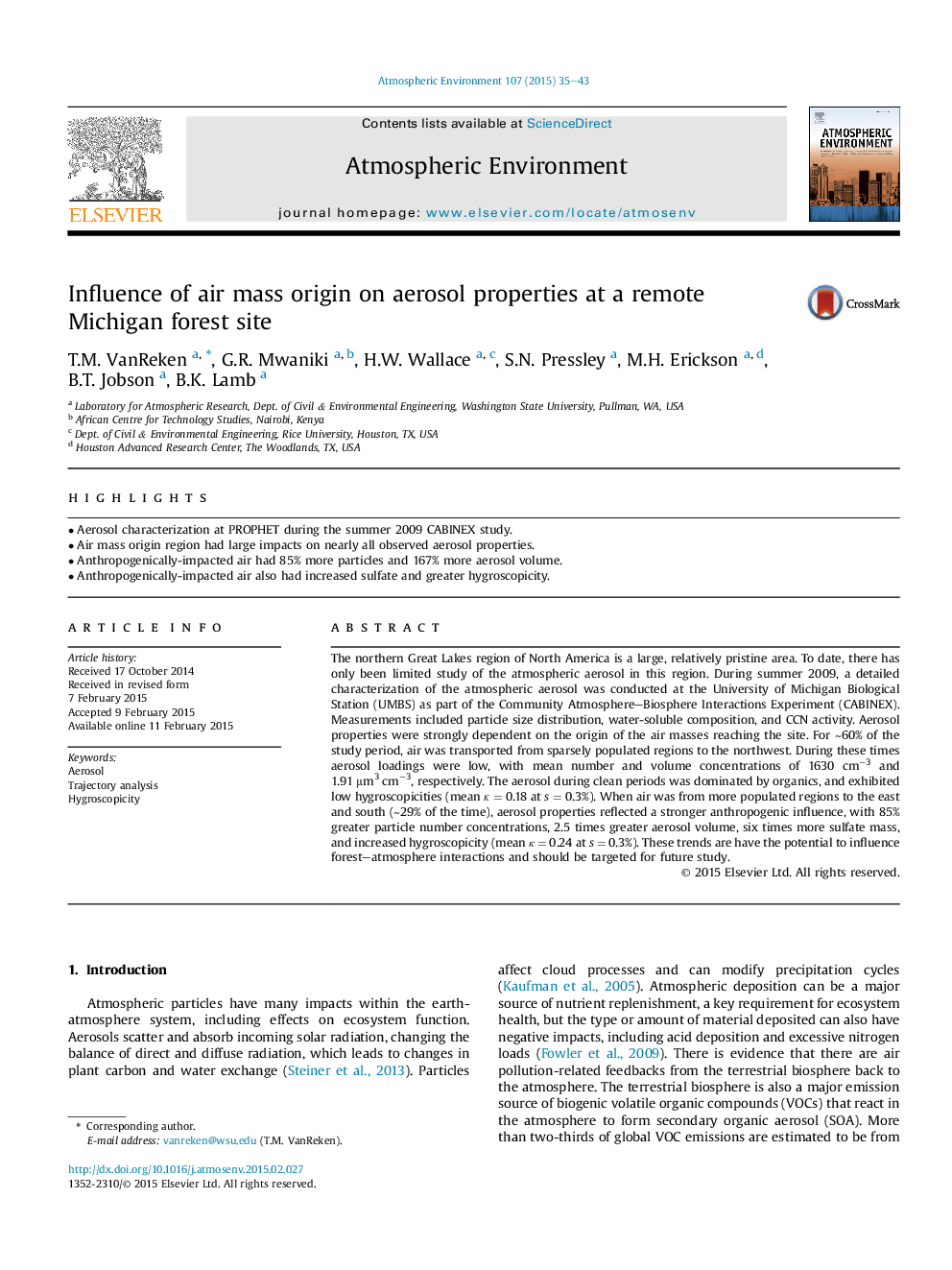| Article ID | Journal | Published Year | Pages | File Type |
|---|---|---|---|---|
| 6338389 | Atmospheric Environment | 2015 | 9 Pages |
Abstract
The northern Great Lakes region of North America is a large, relatively pristine area. To date, there has only been limited study of the atmospheric aerosol in this region. During summer 2009, a detailed characterization of the atmospheric aerosol was conducted at the University of Michigan Biological Station (UMBS) as part of the Community Atmosphere-Biosphere Interactions Experiment (CABINEX). Measurements included particle size distribution, water-soluble composition, and CCN activity. Aerosol properties were strongly dependent on the origin of the air masses reaching the site. For â¼60% of the study period, air was transported from sparsely populated regions to the northwest. During these times aerosol loadings were low, with mean number and volume concentrations of 1630 cmâ3 and 1.91 μm3 cmâ3, respectively. The aerosol during clean periods was dominated by organics, and exhibited low hygroscopicities (mean κ = 0.18 at s = 0.3%). When air was from more populated regions to the east and south (â¼29% of the time), aerosol properties reflected a stronger anthropogenic influence, with 85% greater particle number concentrations, 2.5 times greater aerosol volume, six times more sulfate mass, and increased hygroscopicity (mean к = 0.24 at s = 0.3%). These trends are have the potential to influence forest-atmosphere interactions and should be targeted for future study.
Related Topics
Physical Sciences and Engineering
Earth and Planetary Sciences
Atmospheric Science
Authors
T.M. VanReken, G.R. Mwaniki, H.W. Wallace, S.N. Pressley, M.H. Erickson, B.T. Jobson, B.K. Lamb,
